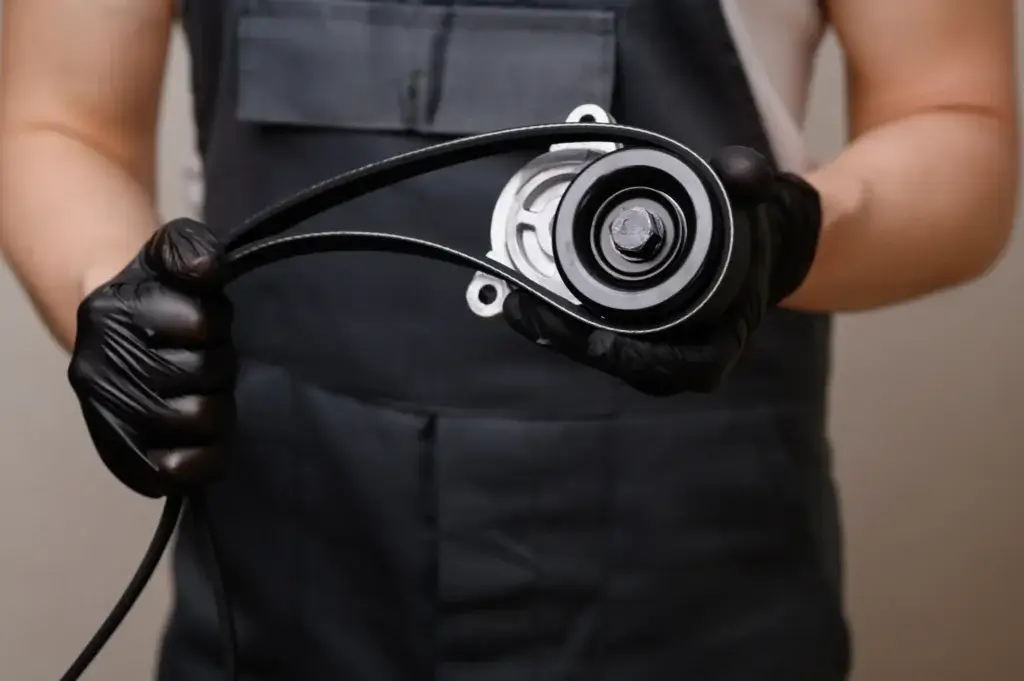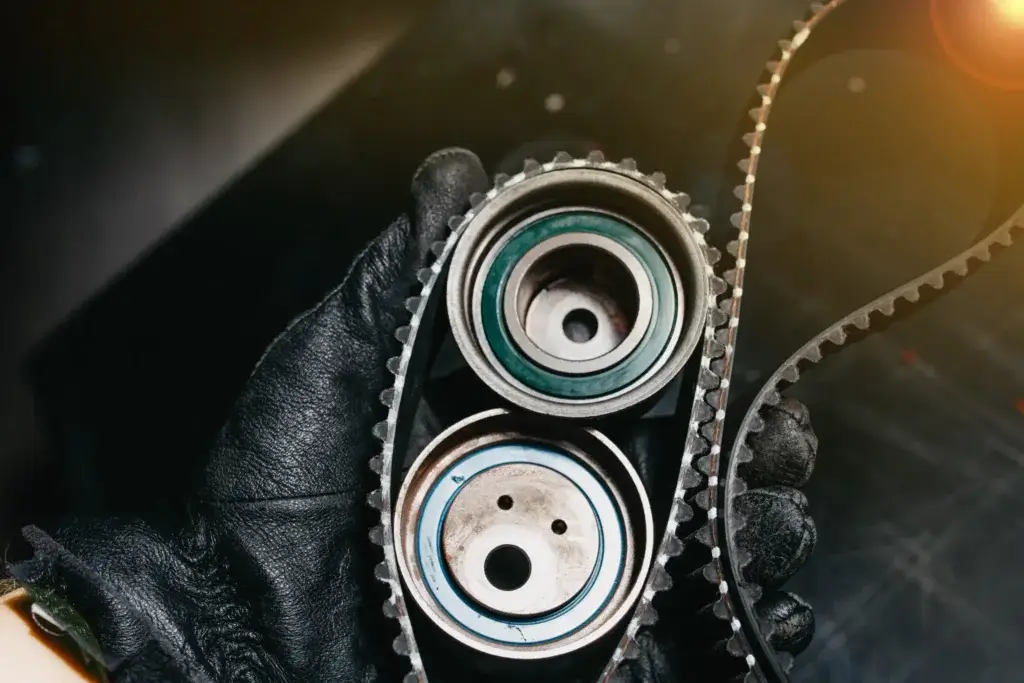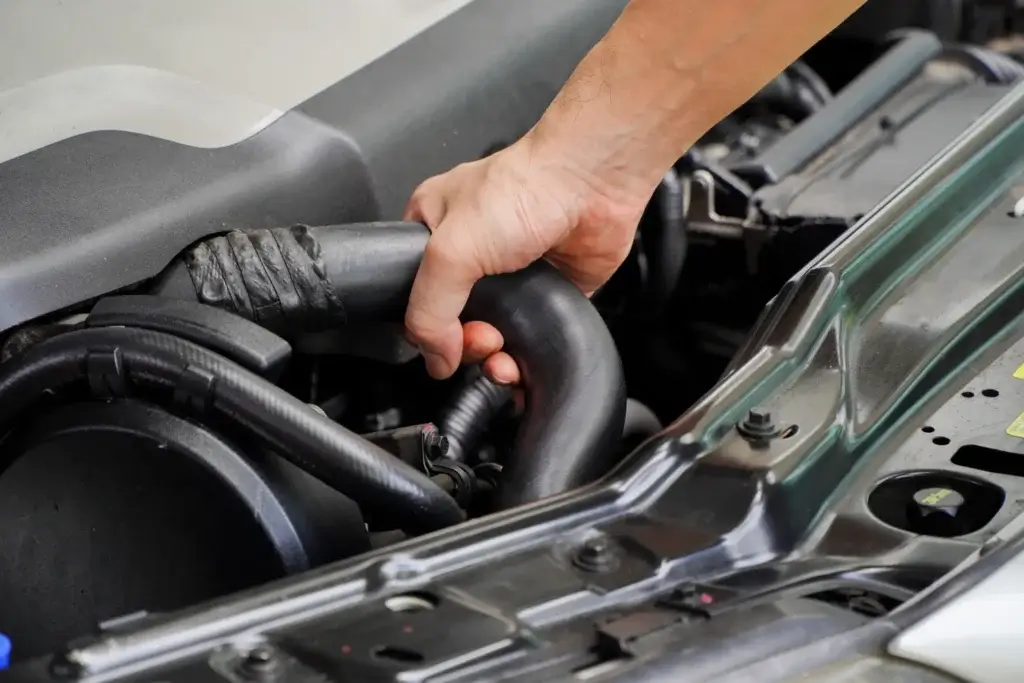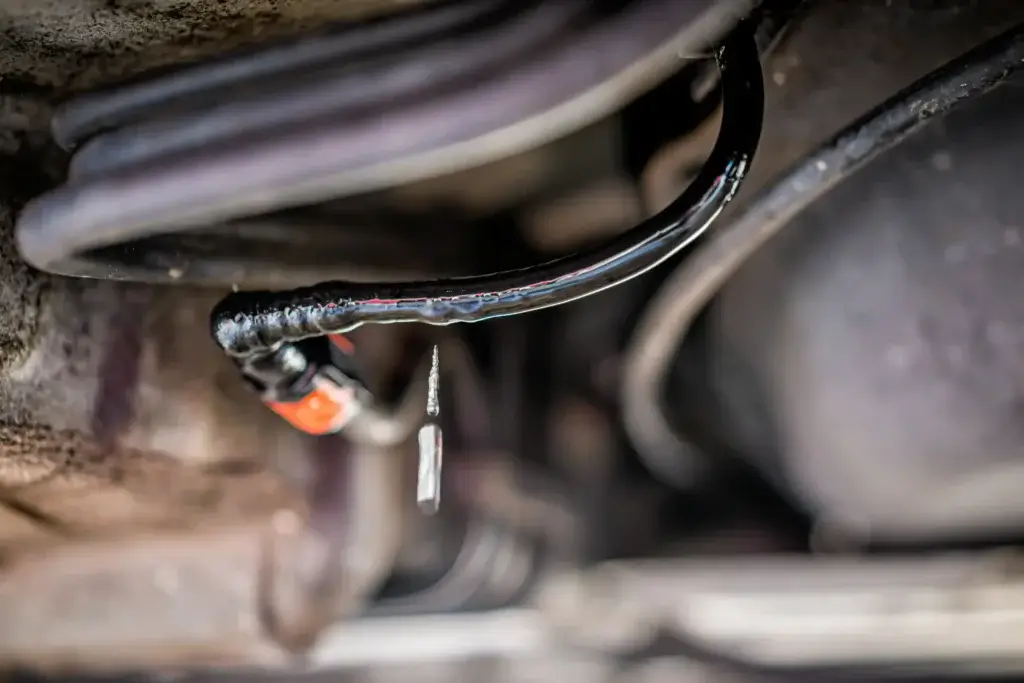Belts and hoses are essential components of your vehicle, playing critical roles in its performance and reliability. They ensure the proper functioning of various systems, including the engine, cooling, and power steering. Regular maintenance and inspection of these components can prevent unexpected breakdowns and costly repairs.

A drive belt, commonly referred to as a serpentine belt, is crucial for the operation of various engine components, such as the alternator, power steering pump, and air conditioning compressor. Its significance lies in its ability to transfer power from the engine to these accessories, ensuring that your vehicle functions properly.
Identifying a worn or damaged drive belt involves looking for signs such as fraying, cracking, glazing, or stretching. You might also hear squealing noises or notice a loss of power to engine accessories. Regular visual inspections can help catch these issues early.
To change a serpentine belt, follow these steps:
It is recommended that the drive belt be replaced according to the manufacturer’s intervals, typically every 50,000 to 100,000 miles.

A timing belt is a critical component of your engine, responsible for synchronizing the rotation of the camshaft and crankshaft. This synchronization ensures that the engine’s valves open and close at the correct times during each cylinder’s intake and exhaust strokes. Proper timing is essential for the engine’s efficiency and performance.
Timing belts differ from timing chains in that they are made of rubber and require periodic replacement, whereas timing chains are made of metal and generally last longer. Symptoms of a failing timing belt include ticking noises from the engine, misfiring, oil leaks from the front of the motor, and difficulty starting the engine.
The consequences of a broken timing belt can be severe, leading to significant engine damage and costly repairs. Therefore, it is crucial to follow the manufacturer’s recommended replacement intervals, typically every 60,000 to 100,000 miles.

Radiator and coolant hoses play a vital role in maintaining your engine’s temperature by circulating coolant between the engine and the radiator. Properly functioning hoses are essential for preventing the engine from overheating and ensuring optimal performance.
Common problems with radiator and coolant hoses include leaks, cracks, and bulges. These issues can lead to coolant loss and engine overheating. Symptoms of damaged hoses can be visible coolant on the ground, a low coolant level in the reservoir, and a rising engine temperature gauge.
To replace a radiator hose, follow these steps:
Preventive maintenance tips for radiator and coolant hoses include regularly checking for visible signs of wear, ensuring the hose clamps are secure, and replacing hoses according to the manufacturer’s recommended intervals. Regular coolant changes can also help extend the life of the hoses.

Regular checks and timely replacements of these hoses are essential to avoid potential issues and ensure the smooth operation of your vehicle. Signs indicating hose wear or damage include visible cracks, leaks, stiffness, and bulges. Proactive maintenance can help extend the life of your hoses and prevent costly repairs.
Ensuring the integrity of your vehicle’s belts and hoses is crucial for maintaining its performance and preventing costly repairs. Don’t wait until a problem arises—schedule an inspection or replacement with Grease Pro today. Our experienced technicians are experts in identifying and addressing issues with serpentine belts, timing belts, radiator hoses, and more.
With multiple convenient locations, booking your service has never been easier. To book an appointment, visit our Schedule a Service page. Trust Grease Pro for top-quality service and peace of mind on the road.
A squeaking noise from your car while driving can be concerning, and it’s often related to the belts under the hood. One common cause could be the serpentine belt, which can start to squeak when it’s worn out or loose or if there’s a misalignment in the pulley system. It’s also possible that the noise could be coming from worn-out bearings in one of the pulleys that the belt runs on. At Grease Pro, we can help diagnose the exact cause of the squeak and recommend the best solution to get your car running quietly and smoothly again.
The serpentine belt is a long, winding belt that’s essential for your car’s overall functionality. It powers several critical components like the alternator, power steering pump, air conditioning compressor, and sometimes the water pump. Essentially, it transfers power from the engine to these various accessories. If the serpentine belt fails, these systems won’t function, which can lead to a breakdown or serious engine damage. Regular inspections and timely replacement of the serpentine belt are crucial, and we at Grease Pro are here to assist with all your belt maintenance needs.
A serpentine belt typically lasts between 50,000 to 100,000 miles, but this range can vary based on your vehicle type and driving conditions. Over time, the belt can become worn, cracked, frayed, or even start to slip. It’s important to have it inspected regularly to prevent unexpected breakdowns. If you notice any signs of wear or hear squealing noises from the belt, it’s time for a check-up or replacement. At Grease Pro, we can assess the condition of your serpentine belt and replace it if necessary, ensuring your vehicle continues to run smoothly and reliably.
To fix a squeaky belt, it’s essential to first identify the root cause of the squeak. Often, a belt squeaks due to wear, misalignment, or incorrect tension. While applying lubricant might offer a temporary fix, it’s not a long-term solution if the belt is worn or damaged. The real fix might involve adjusting the belt’s tension, aligning it properly, or, most commonly, replacing it if it shows signs of wear, like cracks or fraying. It’s also important to check the pulleys and tensioners, as they could contribute to the belt’s condition. At Grease Pro, we focus on accurately diagnosing and resolving the issue to ensure your belt functions quietly and effectively, avoiding just a quick bandaid solution.
The heater hose in a car is a key part of your vehicle’s heating system, especially important during colder months. It works by transporting hot coolant from the engine to the heater core, which is located inside the dashboard. As you turn on your car’s heater, air is blown over the heater core, absorbing the heat from the coolant. This warmed air is then directed into the cabin, keeping you and your passengers cozy. The heater hose, therefore, is crucial not only for regulating the engine’s temperature but also for ensuring that your car’s interior can be comfortably heated. Regular inspection of these hoses, particularly as the weather turns colder, is something we at Grease Pro can assist with, making sure your drives are warm and worry-free.
Symptoms of a bad radiator hose can vary, but there are some common signs to look out for. These include visible cracks or leaks in the hose, swelling or bulging spots, a spongy feeling when you squeeze the hose, or coolant leaks under your car. Another sign is an overheating engine, which can occur if the hose is failing and not allowing coolant to properly flow. If you notice any of these symptoms, it’s important to address them quickly because a failing radiator hose can lead to serious engine damage. We can inspect your hoses and replace them if necessary, helping to keep your engine cool and functioning properly.
With 12 locations, there's always one close by to service your Belts & Hoses needs.
BROWSE ALL LOCATIONS +